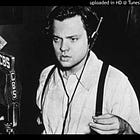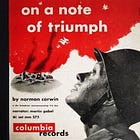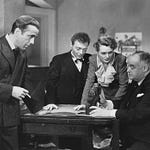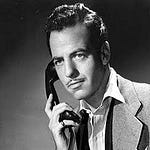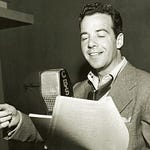The Mercury Theatre on the Air’s 1938 “War of the Worlds” broadcast — directed by and starring the inevitable Orson Welles — is the most legendary radio drama event of them all, so it should not be surprising to find it a point of reference for the Firesign Theatre. David Ossman (who named one of his sons Orson!) has often compared Firesign’s first on-air improvisation to the “War of the Worlds” broadcast, KPFK experiencing a small-scale version of the panic of 1938 when outraged listeners phoned in to protest the suppression of the (imaginary) films that Firesign was “screening” and then censoring in real time — all of it a put-on.
But whereas the citations of Norman Corwin on How Can You Be in Two Places at Once are explicit (if ambivalent), the record’s references to “The War of the Worlds” are embedded more deeply. Recording the album’s first side in the context of Vietnam (and just days after the 1968 Chicago DNC), Firesign seems intuitively aware of the many ways “War of the Worlds” was connected to the World War that would commence in September 1939 (on the false pretense of a captured radio station) and the way the radio would become a crucial conduit for information, misinformation, and morale.
The narrative innovation for which Welles’s broadcast is most famous picked up on a broadcast technique that was only a month old: breaking news bulletins were an invention devised for the coverage of the notorious Munich Accord of September 1938. The Mercury Theatre’s “War of the Worlds” begins with bulletins that become increasingly intrusive and increasingly urgent. It then pursues the technique along a series of successive conclusions: live broadcasts, a government takeover of the air, a live feed of military communications, and then a silence that is still shocking to hear today (27:00-31:00).
But the broadcast itself also played a role in the way the US would fight the war. The official understanding that the CBS broadcast inspired audience panic across the US swiftly led the government to charge the newly-founded Princeton Radio Research Center to study how public belief in the Martian invasion might correspond with American citizens’ susceptibility to Nazi propaganda (which also circulated on the radio).1
An entry in one of Ossman’s recording session notebooks reads simply “encyclopedic misinformation,” which to me suggests that they were trying to create a Gesamtkunstwerk about propaganda (and undoubtedly explains the album’s famous final put-on, which we’ll discuss in a later post).2 Structurally, the first side of How Can You Be also seems to echo “War of the Worlds.” Here’s how I described it in Firesign:
Welles's play begins as a simulated evening of radio which becomes interrupted by emergency bulletins, and eventually cedes control of its airwaves to the government; after forty minutes the audience is finally given the consolation of a protagonist. "How Can You Be in Two Places at Once" begins with a protagonist whom it progressively diminishes and eventually abandons; the piece ends with a series of abruptly interrupted media transmissions — television channels surfed by an anonymous, disembodied viewer.3
There’s a full chapter devoted to this in Firesign, and I’ll have more to say about it in my talk on September 10. Click here to pre-register if you want to attend remotely.
Hadley Cantril, The Invasion from Mars: A Study in the Psychology of Panic (Princeton: Princeton UP, 1940).
Firesign Theatre Collection, National Audio-Visual Conservation Center, Library of Congress.
Jeremy Braddock, Firesign: The Electromagnetic History of Everything as Told on Nine Comedy Albums (Oakland: U California P, 2024) 73-74.



